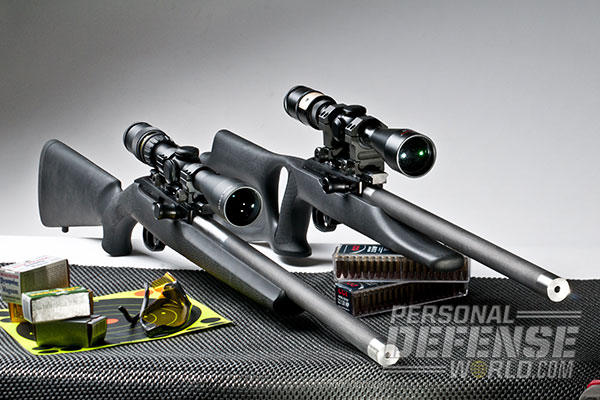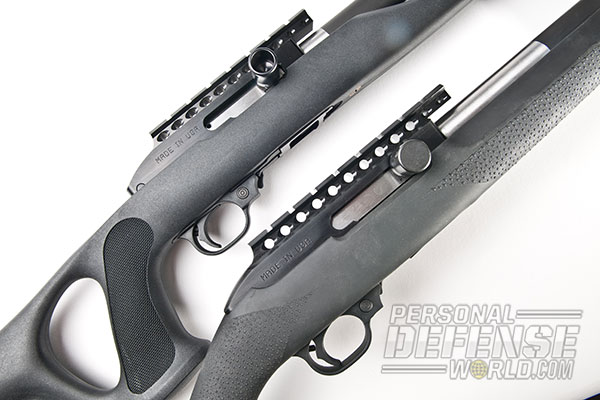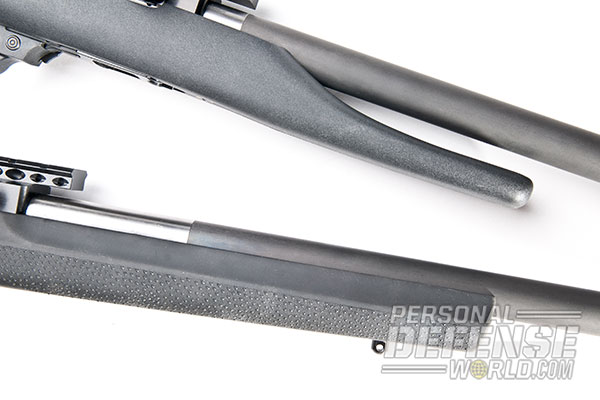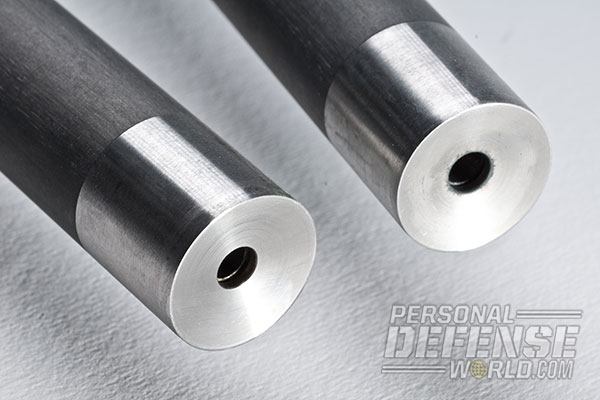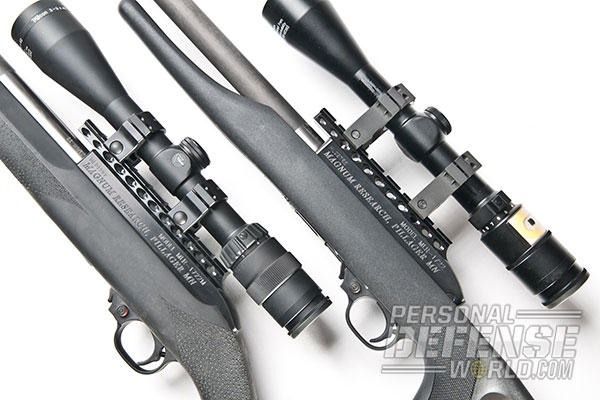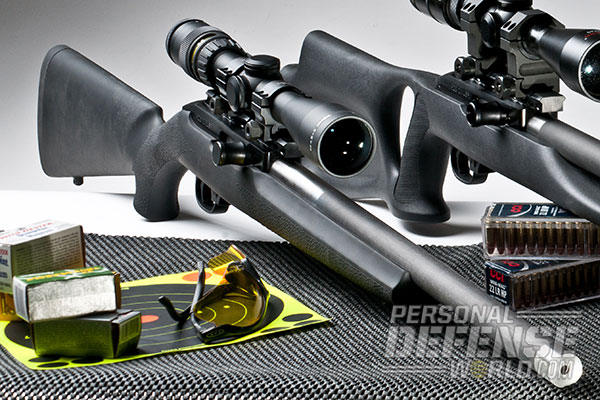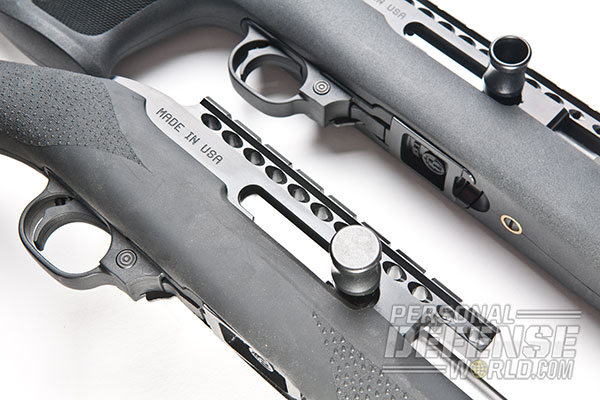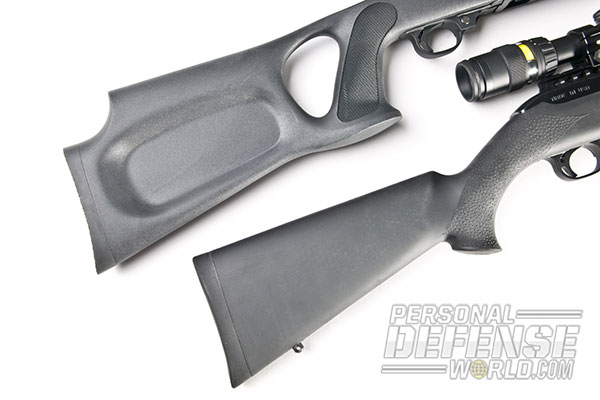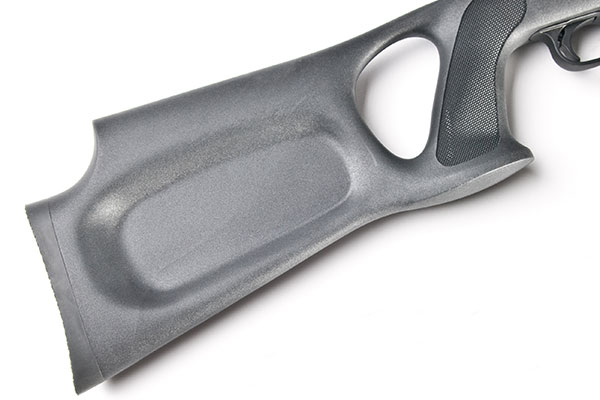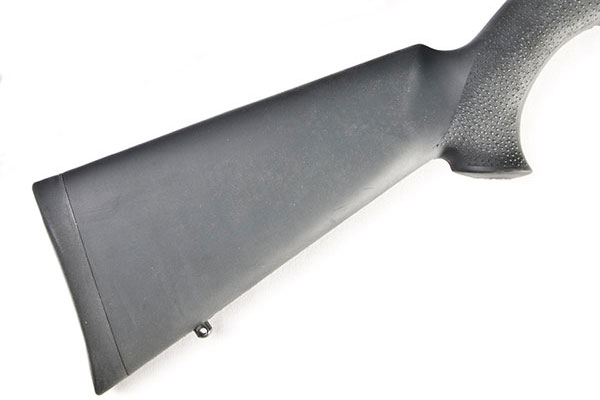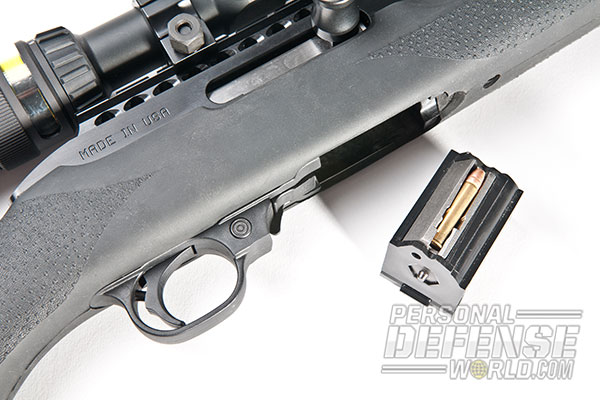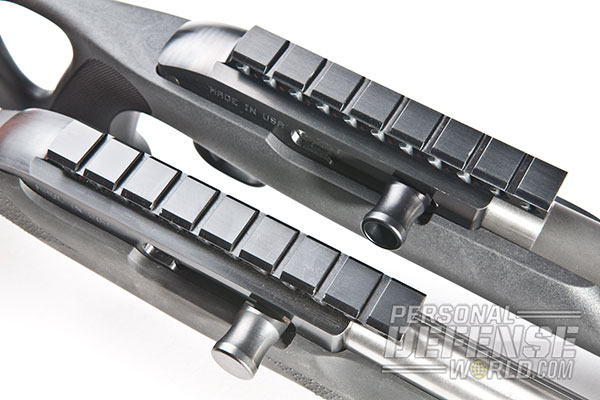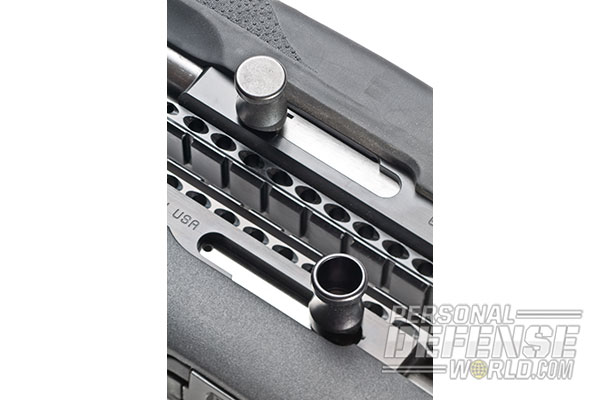Magnum Research, Inc. (MRI) is one of the shooting community’s best-kept secrets. While most shooters know MRI produces the iconic Desert Eagle pistols, too few people understand that they also produce a line of centerfire rifles, large-bore single-action revolvers, as well as a couple rimfire rifles. MRI’s niche is superbly-engineered, super accurate guns possessing custom refinements right out of the box.
Discriminating shooters who value the ownership of precision machined firearms are MRI’s core customer, and they will not be disappointed by two of the company’s semi-automatic rifles: the Magnum Lite .22 LR (MLR22AT) and the Magnum Lite .22 WMR (MLR22WMH).
Advertisement — Continue Reading Below
A Touch of Ruger
MRI has a working relationship with Ruger, which would explain why the trigger group for both rifles is identical to Ruger’s. However, MRI’s bolt and upper receiver are very different. Both the .22 LR and the .22 WMR use an inertia firing pin in their bolts, with an upper receiver machined from one piece of 6061-T6 aluminum and an integral Weaver scope mount. The bolts are heat-treated and have tight bolt face depth tolerances for accuracy.
But what really sets the MRI rifles apart from the Ruger rimfires are their proprietary barrels. Their incredible light weight is responsible for both guns being so light and handy. MRI uses a very thin barrel insert (consisting of the rifling and chamber) and then wraps carbon graphite around it until a diameter of 0.920 inches is achieved. Besides the weight savings, the carbon also adds stiffness and rigidity. MRI says that the barrel is six times stiffer than the equivalent weight of steel. MRI’s patented graphite barrel also dissipates heat much quicker than a steel barrel.
Advertisement — Continue Reading Below
Chambered For Accuracy
Advertisement — Continue Reading Below
Both the .22 WMR and .22 LR uses a carbon steel barrel liner rifled with a 1-in-16-inch twist. For the sake of accuracy, the .22 LR uses a Bentz chamber designed specifically for lead bullets fired in a .22 LR semi-auto. Because of this, CCI Stingers cannot be used, as they are a little longer and will not chamber properly and can cause higher pressures if you manage to force one into the chamber. The .22 WMR chamber is cut to SAAMI specs.
Gas Dispersion Block Handles Blowback on .22 WMR
Advertisement — Continue Reading Below
Getting the .22 WMR to work in a semi-automatic wasn’t just a matter of lengthening the receiver, bolt and magazine. “Ten years ago you had your choice of a 45-grain solid or 40-grain hollow point,” said Jim Tertin, MRI’s director of manufacturing. “Today it’s different. Every ammunition company is loading their WMR’s hotter, and some have even gone to a 30-grain bullet. The problem with the WMR in a semi-auto is that a blowback action wants to open before the bullet has left the barrel. This will result in a case rupture on the rim. Everyone else in the industry has dropped their .22 WMR semi-autos from their lineups, even Ruger. We’re the only one left, and it is due to our patented gas dispersion block.”
There’s a small orifice drilled in front of the chamber where the peak pressure is to bleed off gas. The gas is vented into a block below the barrel, where is it dispersed along the forend. None of the gas is used to cycle the action, as the rifle is a strictly blowback-operated gun. Peak pressure is lowered, and this allows the bullet to exit barrel before the bolt starts to reciprocate. MRI also fits their .22 WMR rifle with a steel bolt handle to add enough mass to keep the bolt closed as long as possible.
Advertisement — Continue Reading Below
Fully Stocked
Advertisement — Continue Reading Below
Both of my samples were outfitted with synthetic stocks. The .22 LR rifle weighs just 4.25 pounds without any optics and possesses an incredible balance thanks in part to the revolutionary patented graphite bull barrel. But the ambidextrous Glacier Ridge polymer thumbhole stock is also a weight saver. It has a very comfortable pistol grip and a comb height sufficient enough that a solid cheekweld can be obtained while shooting with a scope. Its forend is scalloped away from the free-floating barrel, allowing the user to secure a good purchase without actually holding the barrel. MRI sells the Glacier Ridge stock as an after-market part, and it does fit the Ruger 10/22.
The Magnum Lite WMR rifle is outfitted with a Hogue OverMolded stock, which gives it a more traditional appearance. It also possesses a good balance, and the rubbery texture of the stock provides the shooter with a secure shooting grip.
Advertisement — Continue Reading Below
The Right Ammo
Ammunitions that have always shot well in the .22 LR rifle are CCI Standard Velocity, Federal Auto Match and PMC Sidewinder. These are budget-priced bullets which, if you can find them, won’t break the bank and will still give you first-class performance.
Advertisement — Continue Reading Below
For the .22 WMR rifle, either the Federal or CCI 40- or 50-grain loads are recommended for best accuracy.
Other Features
Neither rifle has a provision for iron sights because MRI conceived this as a gun everyone would put an optic on. And, because it is not a tactical weapon, they chose to machine the integral scope mount to Weaver-compatible dimensions, rather than Picatinny. If, for some reason, you need to have a Picatinny rail, ship your rifle back to MRI and they will re-machine to Picatinny dimensions for an extremely nominal fee of $65. The .22 LR’s trigger breaks at a crisp 3.5 pounds, while the WMR’s trigger breaks at about a pound more.
For more information on the .22 LR, the .22 WMR and other products from MRI, visit MagnumResearch.com.
Specifications: MRI MAGNUM LITE .22 LR
CALIBER: .22 LR
BARREL: 17 inches
OA LENGTH: 35.5 inches
WEIGHT: 4.25 pounds (empty)
STOCK: Synthetic
SIGHTS: None
ACTION: Semi-auto
FINISH: Matte black
CAPACITY: 10+1
MSRP: $599
Specifications: MRI MAGNUM LITE .22 WMR
CALIBER: .22 WMR
BARREL: 19 inches
OA LENGTH: 35.5 inches
WEIGHT: 4.45 pounds
STOCK: Synthetic
SIGHTS: None
ACTION: Semi-auto
FINISH: Matte black
CAPACITY: 9+1
MSRP: $791
